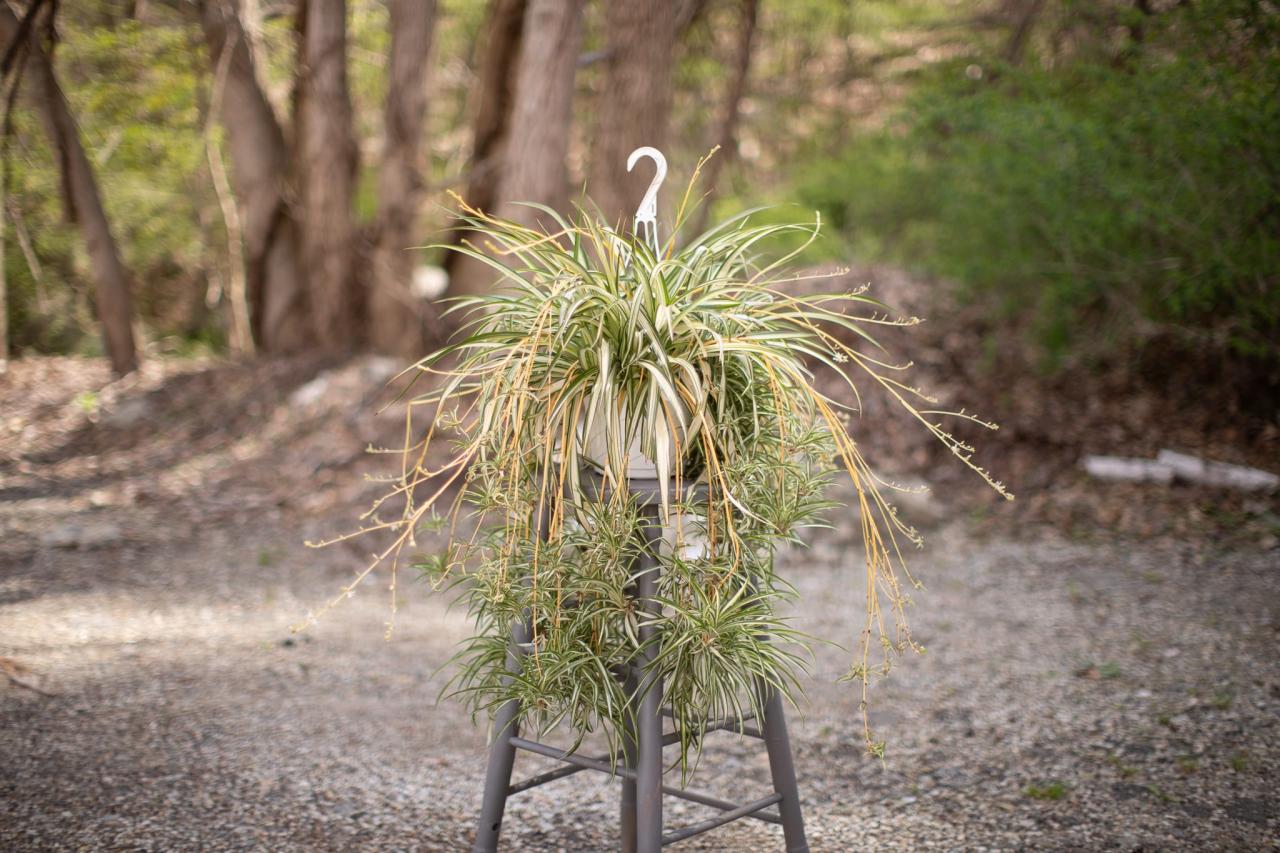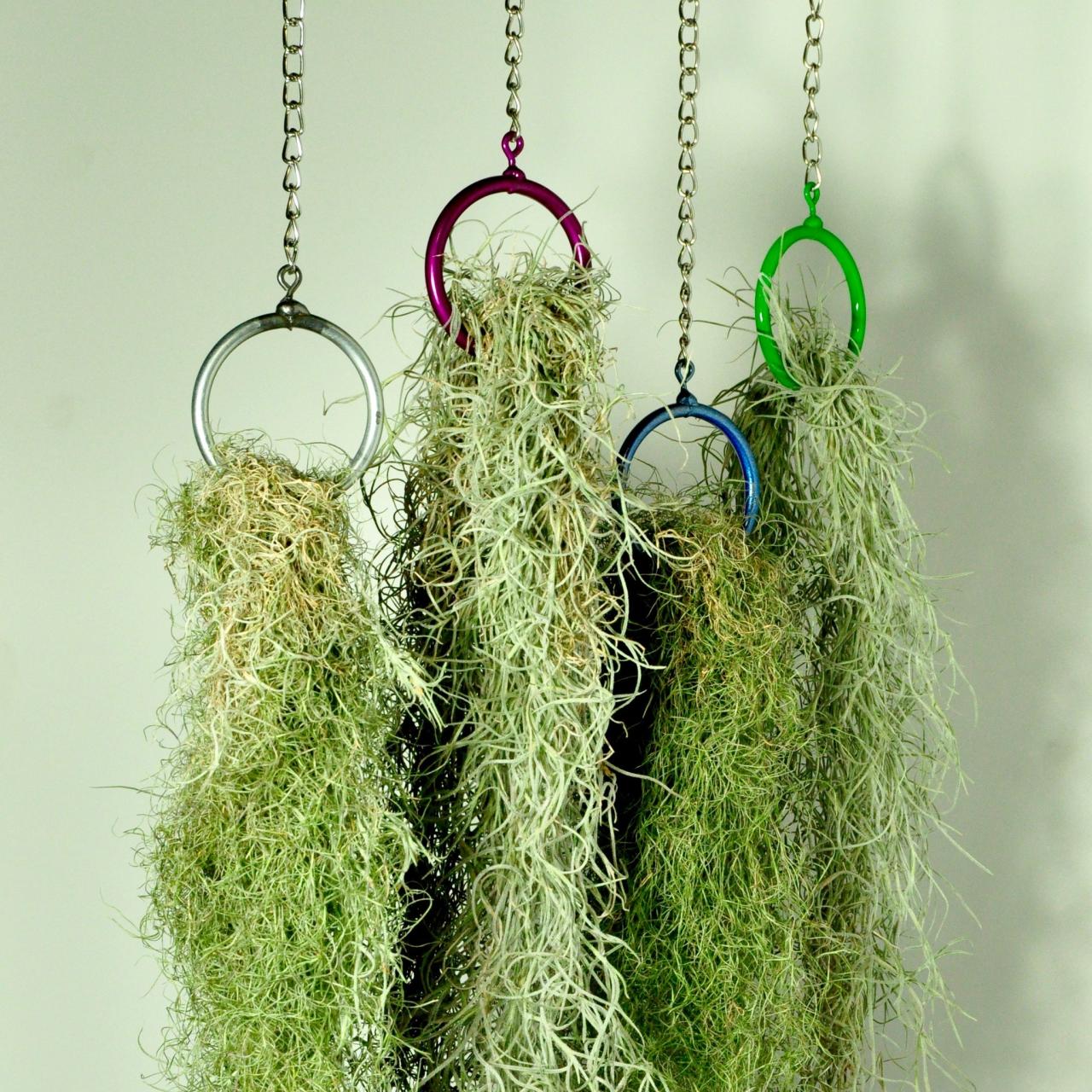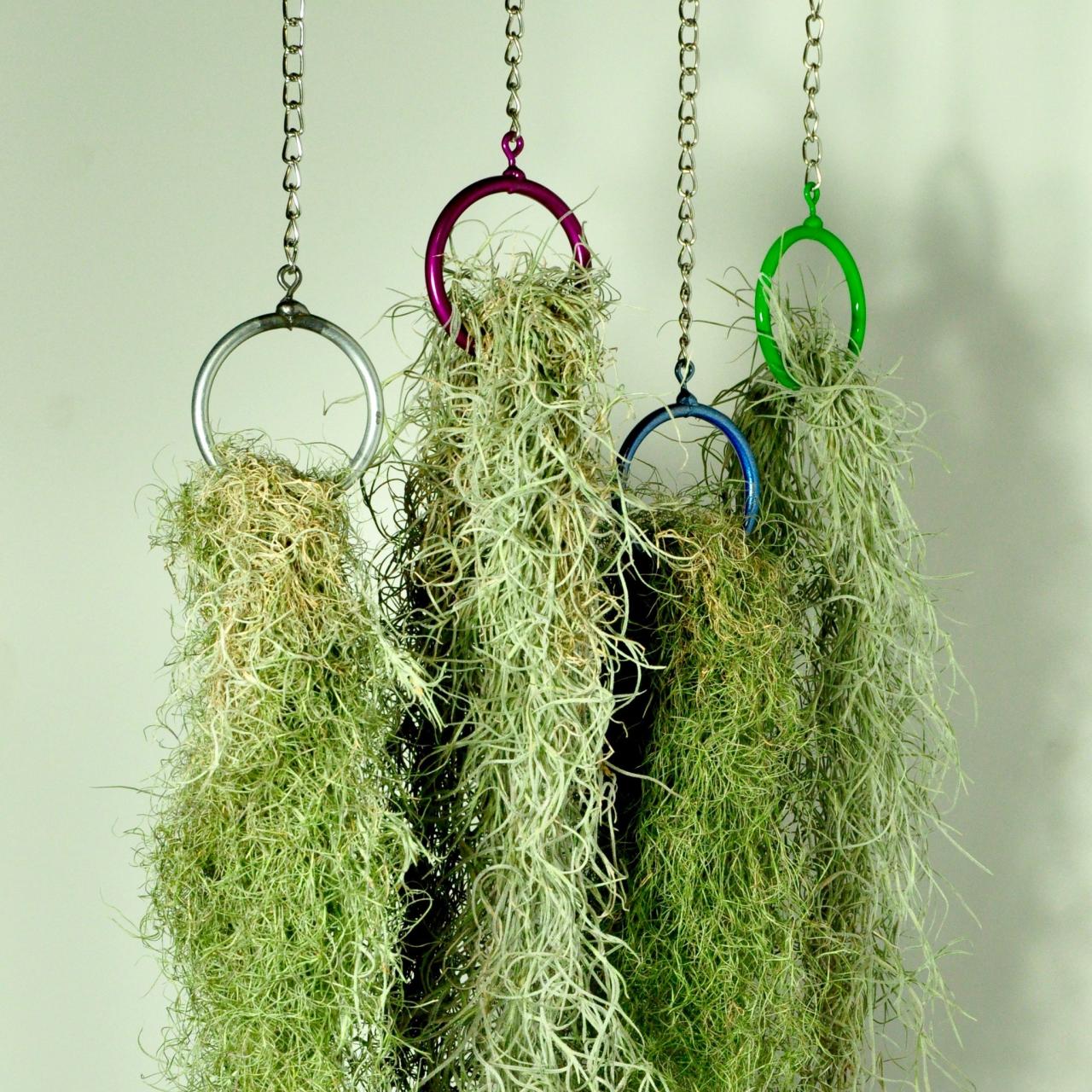Hanging Plants That Purify the Air sets the stage for this enthralling narrative, offering readers a glimpse into a story that is rich in detail and brimming with originality from the outset. Imagine transforming your home into a sanctuary of fresh, clean air, all while adding a touch of verdant beauty.
This is the power of hanging plants, natural air purifiers that not only enhance aesthetics but also improve your well-being. We’ll explore the science behind these botanical wonders, discover the best hanging plants for air purification, and delve into practical tips for cultivating these green companions.
Indoor air quality is often overlooked, yet it significantly impacts our health and well-being. Pollutants like volatile organic compounds (VOCs), dust mites, and mold can linger in our homes, leading to respiratory issues, allergies, and even headaches. This is where hanging plants come into play.
They act as natural air filters, absorbing these pollutants and releasing oxygen, creating a healthier and more refreshing indoor environment.
Introduction to Hanging Plants and Air Purification: Hanging Plants That Purify The Air
Bringing nature indoors has become increasingly popular, and for good reason. Indoor plants not only enhance the aesthetics of our living spaces but also offer a multitude of benefits, including improved air quality. Certain plants have the remarkable ability to absorb harmful pollutants from the air, effectively purifying the environment we breathe.
This exploration delves into the world of hanging plants and their role in enhancing indoor air quality.
The Importance of Indoor Air Quality
Indoor air quality (IAQ) is a critical aspect of our overall well-being. The air we breathe indoors can be contaminated with various pollutants, including volatile organic compounds (VOCs), dust mites, mold spores, and pet dander. These pollutants can trigger allergies, asthma, and other respiratory problems.
Poor IAQ can also lead to headaches, fatigue, and reduced productivity.
Popular Hanging Plants for Air Purification
Hanging plants not only add a touch of greenery and visual appeal to your home but also offer numerous benefits, including air purification. These plants act as natural air filters, absorbing harmful pollutants and releasing clean, fresh air.
Popular Hanging Plants for Air Purification
Several popular hanging plants are known for their air-purifying qualities. These plants effectively remove various pollutants, including volatile organic compounds (VOCs) released from common household items like paint, cleaning products, and furniture.
Plant Name |
Scientific Name |
Common Names |
Air Purifying Properties |
|---|---|---|---|
Spider Plant |
Chlorophytum comosum |
Spider Plant, Airplane Plant |
Highly effective at removing formaldehyde, carbon monoxide, and other pollutants. |
English Ivy |
Hedera helix |
English Ivy |
Removes airborne mold, dust, and other allergens. |
Snake Plant |
Sansevieria trifasciata |
Snake Plant, Mother-in-Law’s Tongue |
Excellent at removing formaldehyde, benzene, and other VOCs. |
Pothos |
Epipremnum aureum |
Devil’s Ivy, Money Plant |
Absorbs formaldehyde, carbon monoxide, and other pollutants, making it a great choice for homes with pets. |
Peace Lily |
Spathiphyllum wallisii |
Peace Lily |
Highly effective at removing ammonia, formaldehyde, and other VOCs. |
Caring for Hanging Plants

While hanging plants offer a beautiful and air-purifying addition to your home, they require specific care to thrive. Understanding their individual needs and providing optimal conditions is crucial for their health and longevity. This section explores the essential aspects of caring for hanging plants, including light, watering, humidity, and common problems.
Light Requirements
Light is a fundamental factor for plant growth, influencing photosynthesis and overall health. Most hanging plants prefer bright, indirect light, avoiding direct sunlight that can scorch their leaves. Understanding the specific light needs of each plant is essential.
- Low-light plants:These plants tolerate low light conditions, making them ideal for dimly lit rooms. Examples include Spider Plants, Snake Plants, and ZZ Plants.
- Medium-light plants:These plants thrive in bright, indirect light, but avoid direct sunlight. Examples include Pothos, Heartleaf Philodendron, and Chinese Money Plant.
- High-light plants:These plants require bright, indirect light and can tolerate some direct sunlight. Examples include String of Pearls, String of Hearts, and Burro’s Tail.
Watering Techniques
Watering is another crucial aspect of hanging plant care. Overwatering can lead to root rot, while underwatering can cause wilting and leaf drop. The frequency and amount of water depend on the plant species, pot size, and environmental conditions.
- Check soil moisture:Before watering, check the soil moisture by inserting your finger about an inch deep. If the soil feels dry, it’s time to water.
- Water thoroughly:When watering, soak the soil completely until water drains from the drainage holes. This ensures the roots are fully hydrated.
- Avoid overwatering:Allow the soil to dry slightly between waterings to prevent root rot.
Humidity Management
Many hanging plants prefer moderate to high humidity levels. Dry air can cause leaf browning and wilting. Here are some tips for increasing humidity:
- Group plants together:Plants naturally release moisture, so grouping them together can create a more humid microclimate.
- Use a humidifier:A humidifier can add moisture to the air, especially during dry seasons.
- Pebble tray:Place a tray filled with pebbles and water near the plant. As the water evaporates, it will increase humidity.
Common Plant Problems
Identifying and addressing common plant problems is crucial for maintaining the health of your hanging plants. Here are some common issues and solutions:
- Yellowing leaves:This can indicate overwatering, underwatering, or nutrient deficiency. Adjust watering practices and consider fertilizing.
- Brown leaf tips:This can be caused by dry air, low humidity, or mineral buildup in the soil. Increase humidity and flush the soil with water.
- Pests:Common pests include spider mites, mealybugs, and aphids. Inspect your plants regularly and treat any infestations with insecticidal soap or neem oil.
- Root rot:Overwatering can lead to root rot. If you suspect root rot, repot the plant in fresh soil and prune any damaged roots.
Designing with Hanging Plants
Hanging plants offer a unique way to add greenery and life to your indoor spaces. Their verticality allows them to maximize space, creating a sense of depth and visual interest. By strategically placing hanging plants, you can transform the aesthetics of your home, creating a more inviting and refreshing environment.
Hanging Plants in Different Room Types
Hanging plants can enhance the aesthetics of various rooms, each offering unique opportunities for design and functionality.
- Living Rooms:In living rooms, hanging plants can add a touch of nature and soften the edges of furniture. They can be used to create a focal point, drawing attention to a specific area of the room. For example, a large, cascading plant hanging above a coffee table can create a cozy and inviting atmosphere.
- Bedrooms:Hanging plants in bedrooms can promote a sense of tranquility and peace. Their presence can help to purify the air, creating a more restful environment. Consider hanging a plant with trailing foliage near a window, allowing it to receive natural light and add a touch of softness to the space.
Hanging plants are a fantastic way to add a touch of greenery to your home while simultaneously purifying the air. But if you have furry companions, it’s important to choose plants that are safe for them. For a comprehensive guide to pet-friendly hanging plants, check out Best Hanging Plants for Pet Owners , which offers a range of options to suit different tastes and environments.
Not only will these plants enhance your home’s aesthetic appeal, but they’ll also contribute to a healthier and happier atmosphere for you and your pets.
- Kitchens:In kitchens, hanging plants can bring a touch of life and color to often utilitarian spaces. They can be used to create a vertical garden, maximizing space and adding a natural element. Hanging herbs, such as basil or mint, near a window can provide fresh ingredients for cooking while adding a fragrant touch to the kitchen.
Creating Unique Hanging Plant Displays
There are numerous ways to create unique and eye-catching hanging plant displays.
- Macrame Hangers:Macrame hangers are a popular choice for displaying hanging plants. They add a bohemian touch to any space and come in various sizes and patterns, allowing you to choose the perfect fit for your plants and decor.
- Geometric Planters:Geometric planters in materials like metal or ceramic can create a modern and minimalist look. Their clean lines and unique shapes provide a striking contrast to the lush greenery of the plants.
- Tiered Stands:Tiered stands offer a way to showcase multiple hanging plants at different heights, creating a cascading effect. They are especially useful in rooms with limited floor space, maximizing vertical space for plant display.
- Floating Shelves:Floating shelves can be used to create a more contemporary and minimalist look. Plants can be placed in pots or hanging baskets and mounted directly to the shelf, creating a seamless and visually appealing display.
The Science Behind Air Purification

While the idea of plants purifying the air might seem like a natural, almost magical process, there’s a solid scientific basis for it. Plants, through their unique biological processes, actively remove pollutants from the air we breathe.
Photosynthesis and Transpiration, Hanging Plants That Purify the Air
The primary process responsible for air purification is photosynthesis. This process, essential for plant growth, involves plants absorbing carbon dioxide (CO2) from the air, using sunlight as energy, and releasing oxygen (O2) as a byproduct. While this process primarily focuses on CO2 removal, it indirectly contributes to air purification by reducing the concentration of this greenhouse gas.Another crucial process is transpiration.
Transpiration involves plants releasing water vapor through their leaves, creating a slight vacuum that draws in air, along with pollutants. This process helps remove volatile organic compounds (VOCs), which are common indoor air pollutants emitted from materials like paints, furniture, and cleaning products.
Hanging plants offer a beautiful and practical way to enhance your indoor environment. Not only do they add a touch of greenery and visual appeal, but they also contribute to purifying the air we breathe. Creating a stunning display of hanging plants can be a fun and rewarding DIY project.
For inspiration and step-by-step instructions on how to create your own unique hanging plant display, check out this comprehensive guide: How to Create a DIY Hanging Plant Display. Once you’ve assembled your display, you’ll be able to enjoy the beauty and air-purifying benefits of these vibrant green companions.
Pollutants Removed by Plants
Plants are effective at removing various pollutants from the air, including:
- Formaldehyde:This harmful VOC is commonly found in building materials, furniture, and carpets. Plants like peace lilies, spider plants, and English ivy are known for their ability to remove formaldehyde from the air.
- Benzene:Benzene, another VOC, is emitted from fuels, paints, and plastics. Snake plants, weeping figs, and chrysanthemums are particularly effective at removing benzene.
- Toluene:Found in paints, adhesives, and varnishes, toluene is a VOC that can cause respiratory problems. Plants like ferns, geraniums, and rubber plants are known to remove toluene.
- Ammonia:Ammonia, often found in cleaning products and fertilizers, can irritate the eyes and respiratory system. Plants like peace lilies, spider plants, and English ivy are effective at removing ammonia.
- VOCs:Plants, particularly those with large leaf surfaces, can absorb and break down various VOCs, reducing their concentration in the air. Examples include ZZ plants, snake plants, and spider plants.
Epilogue

As we’ve explored, hanging plants offer a natural and elegant solution to improving indoor air quality. They not only purify the air we breathe but also add a touch of nature’s beauty to our living spaces. From the graceful spider plant to the vibrant pothos, each plant possesses unique air-purifying properties, making them valuable additions to any home.
So, consider incorporating these green companions into your living environment, and reap the rewards of cleaner air, a healthier home, and a touch of nature’s tranquility.
Questions Often Asked
What are the most common pollutants that hanging plants remove?
Hanging plants are effective at removing a variety of common indoor pollutants, including formaldehyde, benzene, toluene, and ammonia. These pollutants are often emitted from building materials, furniture, cleaning products, and other household items.
How often should I water my hanging plants?
Watering frequency depends on the specific plant and its environment. Generally, allow the top inch of soil to dry out between waterings. Avoid overwatering, as this can lead to root rot.
Can hanging plants help with allergies?
While hanging plants don’t directly cure allergies, they can help by removing airborne pollutants and dust particles that trigger allergic reactions.
Are there any specific plants that are better for removing certain pollutants?
Yes, certain plants are known for their effectiveness in removing specific pollutants. For example, spider plants are excellent at removing formaldehyde, while snake plants are effective at removing benzene and toluene.
